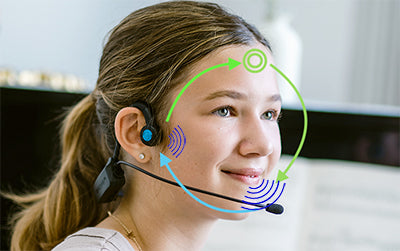Understanding and Managing Echolalia in Autism

Echolalia, the automatic repetition of vocalizations made by another person, is frequently observed in individuals with autism spectrum disorder (ASD). It can be a perplexing phenomenon for parents and educators, yet it holds a myriad of communicative intentions and potentials. Understanding and managing echolalia is not about stifling a voice but rather about nurturing it to find its own rhythm and meaning in the symphony of human interaction.
Speech and language therapists, along with special educators, are the maestros in this developmental concerto. They orchestrate a suite of innovative educational strategies and interventions that support individuals with autism who exhibit echolalia. By tuning into the unique frequencies of each individual, they can help channel repetitive utterances into functional communication skills, fostering increased autonomy and self-expression.
One of the fundamental strategies is to recognize the functions of echolalia. It can be a stepping stone to natural speech, a means to process auditory information, or a strategy to maintain social interaction. By discerning the underlying purposes, educators can tailor their approaches to each individual's needs. For instance, the use of visual supports, such as picture exchange communication systems (PECS), can provide a scaffold for understanding and using language purposefully. Discover how sensory tools can also play a significant role in this context.
Assistive technologies also play a vital role in this educational ensemble. Augmentative and alternative communication (AAC) devices enable nonverbal individuals or those with limited speech to communicate using pictures, symbols, or even speech-generating devices. These technologies not only give a voice to those who struggle to express themselves but also help in modulating echolalic tendencies by providing a structured way to engage in conversations.
Interactive and engaging activities such as role-playing, turn-taking games, and storytelling can encourage spontaneous language use and help in contextualizing echolalia. These activities can be designed to incorporate the individual's specific interests, which can significantly increase motivation and participation.
Moreover, the integration of sensory integration therapy can assist in regulating the sensory processing issues that often accompany autism. By addressing these sensory needs, individuals with ASD can become more attuned to their environment, making it easier for them to focus on and participate in communication exchanges.

Continuing with our journey, collaboration with families is essential in managing echolalia. Parents and caregivers can reinforce strategies at home, creating a consistent and supportive environment for the individual with autism. Sharing insights about a child's communication patterns with professionals can also lead to more personalized and effective interventions.
Furthermore, peer-mediated interventions can be a powerful tool. Involving neurotypical peers in the therapeutic process can provide naturalistic opportunities for modeling and practicing social communication skills. It can also foster friendships and understanding among peers, breaking down social barriers and promoting inclusivity.
Professional development for educators is another critical component. By staying abreast of the latest research and intervention techniques, teachers can continually refine their approaches to meet the evolving needs of their students with ASD.
As we move forward, it is important to remember that managing echolalia is not about eradicating a behavior but about embracing it as part of the individual's communication repertoire. It is about guiding and shaping it into a tool that can serve them in connecting with the world around them.
Let us reflect on the melody of echolalia, not as a cacophony of repeated sounds, but as the initial notes of an individual's unique composition. With patience, understanding, and the right support, these notes can be harmonized into a beautiful symphony of self-expression and communication.
